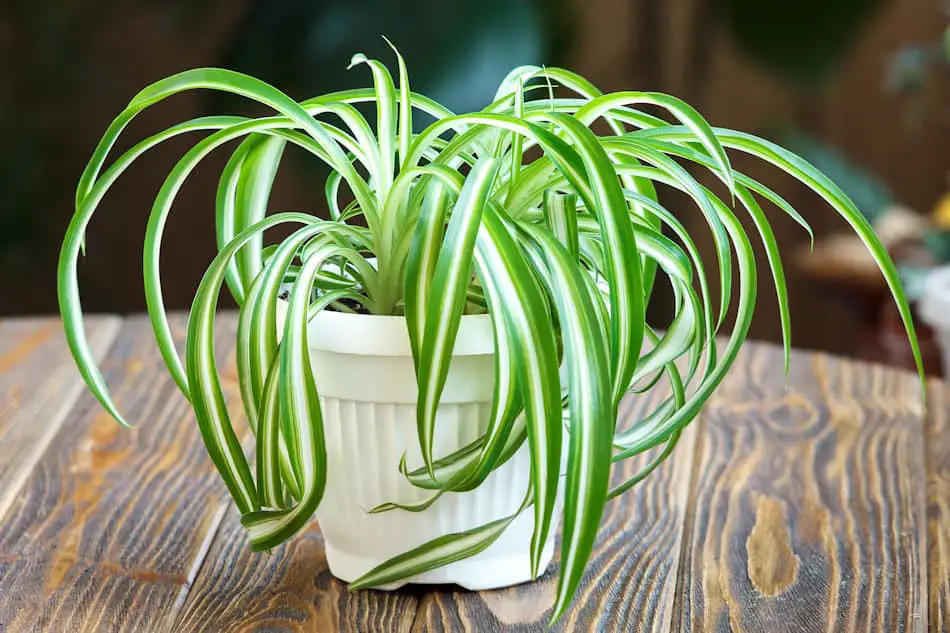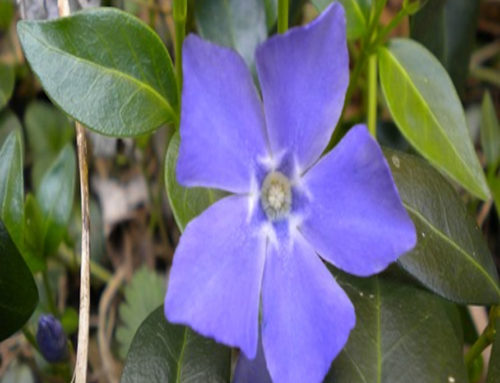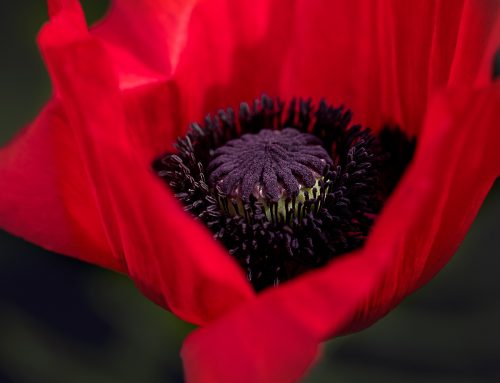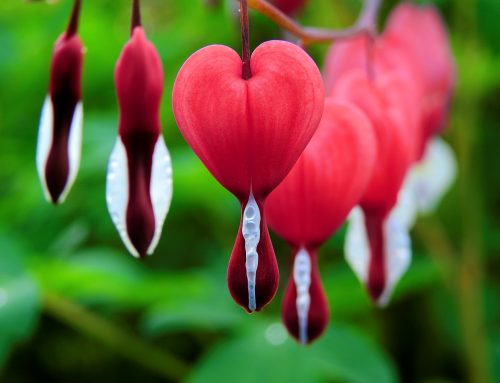Although you might be afraid of actual spiders, the spider plant offers nothing but clean air and a nice décor to your home or office. Originating in South Africa, the versatile, air-cleaning, and easy to grow spider plant is also known as “airplane plant,” “ribbon plant,” and “spider ivy.”
If you feel like you don’t possess the proverbial green thumb, or if you are just looking for an easy-to-grow plant that will help reduce indoor air pollutants and look pretty in your home or office, choose the spider plant. Whether cascading down a basket with its spiderettes, or sitting on your desk, the spider plant makes a great addition to any area.
Where Should I Put a Spider Plant in my House
The spider plant will be happy wherever you place it, as long as you do not place it in direct sunlight. It can sit on a desk or dresser near a window, and enjoys indirect sunlight. It can also tolerate lower light from a bathroom or other interior room, though you might lose some of the variegation.

Spider Plant Information
Types of Spider Plants
All spider plants were not created equal. Yes, they all share the traits of being easy to grow and bringing peace and cleaner air to your home, but there are variations in the types of leaves they create. Choose the look that is best for your decorating style and the picture you are trying to create.
Vittatum is a variety of spider plant that features green arched leaves containing a single off-white stripe down the middle of each leaf.
Variegatum is the exact opposite of vittatum, and presents an off-white stripe which runs along the entire end of the arched plume.
Propagation of Spider Plants
There are two basic ways to propagate these plants, and they both have to do with the flowering of the spiderette, which gives the plant its name. The easiest way to propagate the plant is to wait until it flowers in the spring.
The tiny white flowers give way to spiderettes, and this is what is used in the propagation. Propagation is most successful if the spiderette continues to be attached to the mother plant. Plant the spiderette in rich soil in a pot next to the mother, and when the spiderette grows roots, you can detach it from the mother.
Alternatively, you can detach the spiderette immediately from the mother plant. In this case, plant the spiderette in rich soil, water it well, and place it in a ventilated plastic bag in direct sunlight. Once the spiderette grows roots, remove the bag and grow it as you usually would.
Pests and Problems
There are several problems and pests that will get in the way of growing a healthy plant.
Tip Burn – With tip burn, your plant will experience brown tips, and this is most often associated with too much fluoride in the water. A good flushing is in order, because the fluoride causes salt to build up in the soil.
Root Rot – This is caused by too much water, and you may need to do a little digging to get rid of this problem. Pull the plant gently out of the pot, and cut away any rot that you find. Before you put your plant back, wash the pot thoroughly with soap and water.
Mealybugs – These can cause problems for your plant. Mealybugs love to suck the juices out of your plants, and look like fluffy little cotton balls. They reproduce quickly and can wreak havoc with your spider plants, so you will want to get rid of them as soon as possible.
In order to do so, use cotton balls and 70% rubbing alcohol to eliminate the mealybugs you see. Then, in order to get rid of the bugs you don’t see, add several drops of dish soap to one cup of rubbing alcohol, and spray on the plant. You will want to continue this treatment every few days to make sure you eradicate the mealybugs entirely.
Scale – If you have small brown sticky patches on your plants, your spider plants have most likely been affected with scale. An insecticidal soap rubbed on the leaves will take care of the problem. If you suspect it is widespread, put the plant in the bathtub and clean it thoroughly with soap and water. You might also want to replant it in fresh soil.
Questions About the Spider Plant
Even with its ease of growth, there are still some questions that many gardeners have about spider plants that could help you as you grow them. Read below for some of the most common problems and worries, as well as how to solve them.
Are Spider Plants Indoor or Outdoor
Most people consider the spider plant an indoor plant, and they certainly do add a pleasant look and fresh oxygen to any room in your home or office. That being said, in summer months they easily grow outside, and they can even grow year round in Zones 9-11.
Can a Spider Plant Just Live in Water
No, the spider plant needs soil and fertilizer for full growth. Although rooting a spider plant in water is a great way to get a new plant started, this is not a sustainable system. Once the roots are established (after about 3 weeks), you need to pot the spider plant in well-drained and fertilized soil for optimum growth.
Can Spider Plants Grow in Full Sun
No, spider plants cannot grow well in full sun. Brown tips and spots will occur if the sun burns the edges of the leaves. The spider plants do best in indirect sunlight, when the variegated nature of their leaves will really be able to pop. If there is not enough light, the variegated leaves will be lost.
How Do I Identify a Spider Plant
Just as the name implies, the spider plant is easily recognized for its little “baby spider” plants, or spiderettes, that cascade down the mother plant. The leaves of the spider plant can be green or variegated. Because of the cascading nature of the spider plant, especially in the spring when it flowers into the baby plants, this plant looks fantastic in a hanging basket.
How Do you Take Care of a Spider Plant
Caring for a spider plant is easy, and this is why they are perfect for beginner gardeners. Keep your spider plant in indirect sunlight at a temperature of 55-65 degrees. Let the soil dry before you water it, so that it does not become oversaturated. Use fertilizer during the spring and summer to encourage growth. The spider plant will grow quickly, and needs to be re-potted once a year.
Is a Spider Plant a Succulent
No, a spider plant is not a succulent. A succulent is a drought resistant plant that has fleshy leaves or roots. Although the spider plant does not require a lot of water, and is happiest when it is allowed to dry out before being watered again, it is not technically classified as a succulent.
Is Spider Plant Good for Home
The rosette of long, arched leaves that are green or variegated with white edges, are a perfect decorative addition to your home. In addition to this, the plant will clean the air and offer fresh oxygen. Another reason the spider plant is good for your home is that it is not toxic to children or animals, so you will not need to worry so much about placement. Here is an article on How to Keep Cats Away From Plants that you may find helpful if you have cats.
Should I Cut the Brown Tips off my Spider Plant
No, do not cut the brown tips off your spider plant. Brown tips on spider plants, although annoying, are not cause for alarm. They are often the result of water that has too much fluoride in it, and causes the salt to build up in the soil. To fix this problem, water them thoroughly to leach out all the salts. It could also help to regularly water your plant with distilled water or even rainwater. Dry soil or low humidity can also cause the brown tip problem.
In Conclusion
The spider plant makes a beautiful, easy-to-grow addition to your home or office. Place it in indirect sunlight, go easy on the water, and you will marvel at the itsy bitsy spiders that cascade from the mother plant and brighten your area.






